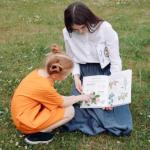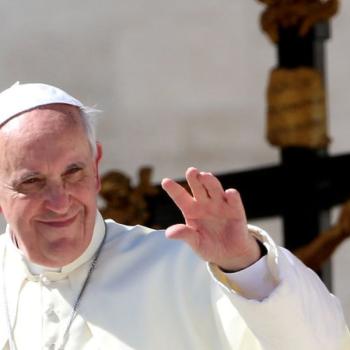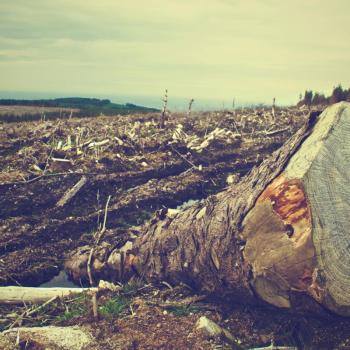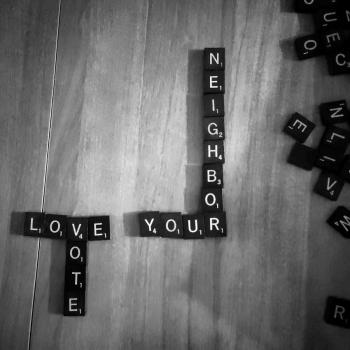God’s command to love your neighbor extends to our neighbors in Creation, including the land, waters, trees, animals, and human kin.

Here are ideas for reading and preaching Leviticus 19:1-2, 15-18; Matthew 22:34-46. This is part of the EcoPreacher 1-2-3 series to equip preachers and congregations for engaging the Bible through an ecological lens. These texts are assigned as part of the Revised Common Lectionary for the Twenty-second Sunday after Pentecost, Oct. 29, 2023.
Eco-Exegesis
Eco-exegesis is a method of interpreting the biblical text through a green lens using the principles of ecological theology.
Leviticus 19:18 — You shall not take vengeance or bear a grudge against any of your people, but you shall love your neighbor as yourself: I am the Lord.
Matthew 22:36-40 — “Teacher, which commandment in the law is the greatest?” 37[Jesus] said to him, “’You shall love the Lord your God with all your heart, and with all your soul, and with all your mind.’ 38This is the greatest and first commandment. 39And a second is like it: ‘You shall love your neighbor as yourself.’ 40On these two commandments hang all the law and the prophets.”
Love your neighbor as yourself
“Love your neighbor as yourself” is commonly known as the Golden Rule because it is the ethical principle that undergirds right action in a community. “Do unto others as you would have done to you” is another way of expressing this principle of treating others the way you would want others to treat you.
This foundational principle not just a matter of altruism. “Love your neighbor,” at its heart, is a recognition that we are integrally and intimately connected to all beings to the point that what happens to others ultimately affects us as well. It stands to reason that the harm I do to others will eventually come back to me in some form or another. Stated in a positive way, the good that I do toward others will be reciprocated in some fashion in the future. As many mystics have observed, the separation between “me” and “thee” is illusory at best.
The meaning of the word “love” in this case does not involve a romantic feeling.
It is making the choice to treat a person as one who is a beloved family member, spouse, or friend. When thinking about our actions, we should ask, “If I loved this person, what would be the most loving thing I could do in this situation?” When others follow this same line of thought, the result is a reciprocity of generosity, care, and communal flourishing.
The dynamics of reciprocity are especially obvious as we come to understand that the planet we share is a “closed system” in which the things we do to the water, land, air, trees, animals, and fish find their way back to us. For example, when we use petrochemical plastics, they eventually end up in our own bodies by way of the oceans and landfills. There they breakdown into microplastics, which are consumed by fish and animals and make their way into the food chain and eventually to our own bodies.
Being a good neighbor to our Earth-kin
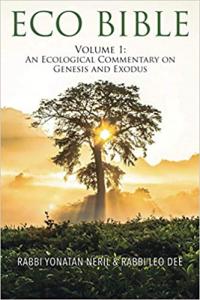
In their commentary of Leviticus 19:18 in Eco Bible Vol. 2, Rabbis Yonatan Neril and Leo Dee note that “Rabbi Samson Raphael Hirsch (19th century) expands the obligation of loving one’s neighbor to considering the welfare of other living beings on the planet. Thus, the obligation can be seen as a basis for all environmental protection. Being a good neighbor means taking good care of our environment/life support system to ensure that others can also benefit in a sustainable way.” (Eco Bible, Vol. 2, 35).
In the Mishnah (the first Jewish commentary on the Hebrew Scriptures), the sages applied the “good neighbor” principle in practical ways. For example, they stated that “someone who digs a water structure near his neighbor’s property must provide a suitable buffer zone in the form of waterproofing and adequate distance to the protect the neighbor’s property,” (Eco Bible, Vol. 2, 35).
In other words, our actions must go beyond satisfying our own needs and wants. We must take into consideration how the things we do will affect others. “Preventing this environmental injustice is an individual, community, and governmental responsibility,” Neril and Lee write. “We are obligated to minimize our harmful impact on our neighbors” (Eco Bible, Vol. 2, 35).
Jesus reiterated the ethical principle of “love your neighbor as yourself” in his teachings.
In Matthew 22:36-40, Jesus reminds us that loving one’s neighbor has a theological basis at its core. When we follow the rule of positive reciprocity we demonstrate that we love God, since God is the one who created the neighbor. When we give forethought to the wellbeing of our fellow humans and Earth-kin, this honors God because it shows respect for that which God has created.
In chapter 3 of my book, Creation-Crisis Preaching: Ecology, Theology, and the Pulpit, I describe an exercise for preachers and congregations called the “Who Is My Neighbor in Creation Map.” Through activities such as walking around the church property with an eye toward our neighbors in Creation, talking with those who work closely with nature, and listening to local environmental activists, we can get a better sense of how to best practice the principle of “love your neighbor as yourself.”
1 Eco-Idea
The Eco-Idea is one succinct statement that tells us who God is and/or what God does in relation to Creation and how we should respond as people of faith.
God’s command to love your neighbor means acting in an ethical and loving way toward our neighbors in Creation, including the land, waters, trees, animals, and human kin.
2 Eco-Questions
Eco-Questions are what we can ask to help a congregation draw out the implications of the Eco-Exegesis and Eco-Idea.
- Who are your “neighbors” in God’s Creation just beyond the walls of your church? What are the names of the trees, plants, insects, birds, and animals that reside on your property or pass through? How can your congregation practice love toward these neighbors?
- In what ways can your church practice loving reciprocity within your neighborhood? Can you set up a “food library” where people can exchange and share nonperishable food items? Or a clothing exchange so that items can be reused instead of sent to a landfill? Listen to people in your community to find out what would be most useful and helpful.
3 Eco-Actions
Eco-Actions are ways that a congregation might respond to the Eco-Idea and Eco-Questions. One of these possibilities may have salience for your ministry context.
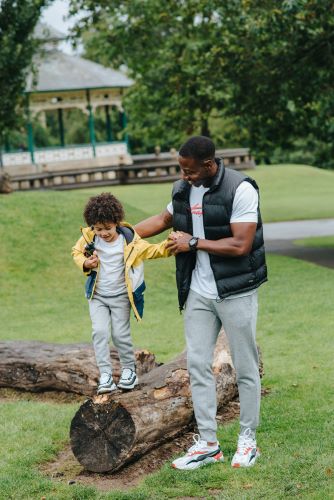
- Watch The Story of Stuff, a short internet video about where our resources come from and where they go. Discuss how your congregation can interrupt the cycle of pollution through practices such as composting, eliminating the use of pesticides and herbicides, and refraining from unnecessary purchases of “stuff.”
- Consider ways your church can provide shelter and food for your Earth-kin neighbors who stop by, such as the birds and pollinators. Erect birdhouses, plant pollinator gardens, and put out food for migrating birds.
- Gather youth and adults for a series of “Who Is My Neighbor in Creation” activities. Work through the exercise and take pictures of your neighbors in Creation. Create a slideshow to share in an educational forum and a collage that can be put on display in the gathering area so that everyone can see that the “congregation” worshiping here extends beyond the walls of the church.
Read also:
Who Is My Neighbor in Creation? Mapping Exercise for Clergy, Congregations
Gleaning Divine Abundance: Isaiah 55:1-5; Matthew 14:13-21
10 Principles for Environmental Preaching: How to Craft Eco-Sermons
How to Preach a Sermon about Climate Change and Your Congregation
EcoPreacher 1-2-3 is a partnership between the Rev. Dr. Leah Schade and the Interfaith Center for Sustainable Development, publishers of Eco Bible, a Jewish ecological commentary on the Hebrew Scriptures. EcoPreacher 1-2-3 provides Creation-centered sermon preparation that is short, accessible, and based on a solid biblical foundation. To see other EcoPreacher ideas and to sign up to receive future EcoPreacher 1-2-3 installments, click here.

The Rev. Dr. Leah D. Schade is the Associate Professor of Preaching and Worship at Lexington Theological Seminary in Kentucky and ordained in the ELCA. Dr. Schade does not speak for LTS or the ELCA; her opinions are her own. She is the author of Preaching in the Purple Zone: Ministry in the Red-Blue Divide (Rowman & Littlefield, 2019) and Creation-Crisis Preaching: Ecology, Theology, and the Pulpit (Chalice Press, 2015). She is the co-editor of Rooted and Rising: Voices of Courage in a Time of Climate Crisis (Rowman & Littlefield, 2019). Her newest book is Introduction to Preaching: Scripture, Theology, and Sermon Preparation, co-authored with Jerry L. Sumney and Emily Askew (Rowman & Littlefield, 2023).


